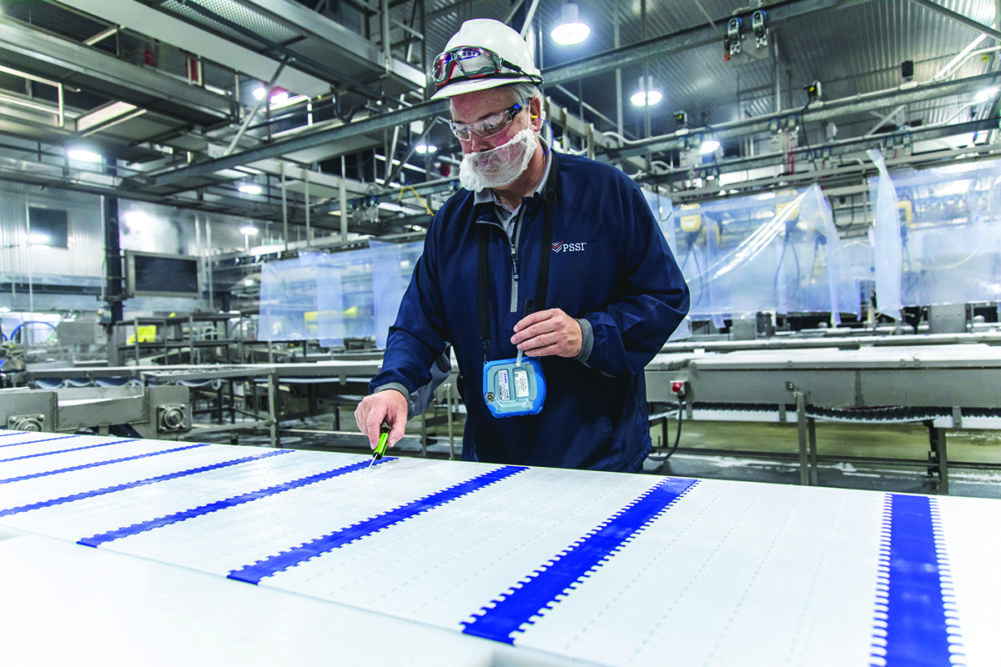Among the better uses of technology in the fresh food world is helping suppliers and their retail partners meet the highest food safety standards as efficiently as possible.
One of the food safety technology innovations that stands out for Neal Mays, regional sales manager for the Safe Foods Chemical Innovations division of PSSI, is the introduction of ATP testing technology, which enables plant sanitation or FSQA staff to swab food contact surfaces in production areas at the end of the sanitation process and before production begins.
The key advantage of ATP, Mays said, is its ability to swiftly and accurately assess the cleanliness of surfaces before the start of production.
“What makes it significant is the speed at which results are generated. It provides a clear verdict, indicating whether the surface is clean or not.”
When ATP isn’t used, immediate action can be taken to rewash the surface, followed by a retest to ensure it meets the required food safety standards.
Another key technological breakthrough in the food safety realm has been the integration of telemetry into production processes, Mays said.
It’s by no means a brand-new technology, but substantial improvements in the sensitivity of the instruments it uses have led to enhanced process control.
For example, Mays said, the ability to monitor and control concentration of antimicrobial chemistries in wash lines, such as PAA and sodium hypochlorite, continues to improve as sensor technology improves.
PSSI has embraced these and other recent technologies to effectively address the food safety requirements of its customers, Mays said.
One of PSSI’s new products involves the development of specialized equipment for the reconditioning of process water.
It’s a technology, Mays said, that relies solely on a mechanical process for the removal of particles, some as small as 10-12 microns in size. An additional benefit is that it doesn’t need filters or screens, which reduces additional maintenance and streamlines operations in an already busy workday.
“Preliminary work in poultry processing applications indicates water quality can actually improve throughout production, and we’ve observed a decrease in micro load simply by keeping water cleaner,” Mays said. “Other major benefits include decreased water usage and less time required to clean tanks connected to this equipment.”
Another example of the ways in which recent technological advancements have made a big difference is in the dosing and dispensing of cleaning and sanitizing chemistries.
With the incorporation of digital and smart technology into equipment, Mays said, digital flow meters, pumps, and telemetry — working simultaneously — have provided tremendous advances in the ability to monitor food safety chemistries in real time, receive alerts when sensors detect conditions gone awry, and allow plant staff to respond and address problems quickly.
PSSI’s Safe Foods Chemical Innovations MARC system offers all these benefits while also tracking chemical and water usage.
“The ability to detect leaks and compare usage volumes between application points over time is helpful in controlling costs. And since MARC tracks chemistry and wash water flow throughout production, the software’s reporting capabilities are very useful verification tools for food safety audits.”
The incorporation of digital and smart technology in dosing and dispensing equipment has led the way in advances in precision, efficiency, and safety in food production processes, Mays added.
This article is an excerpt from the December 2023 issue of Supermarket Perimeter. You can read the entire Food Safety Technology feature and more in the digital edition here.

